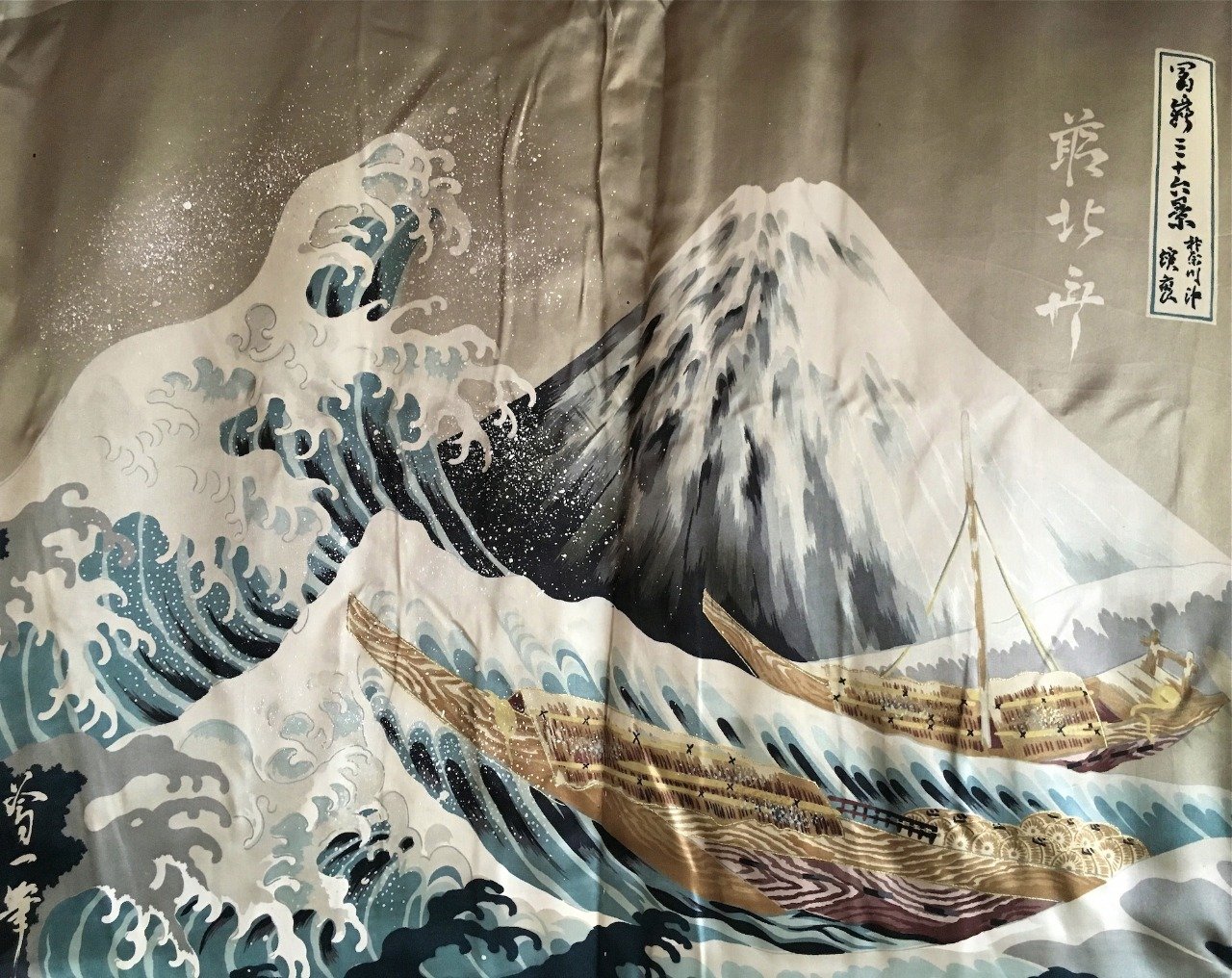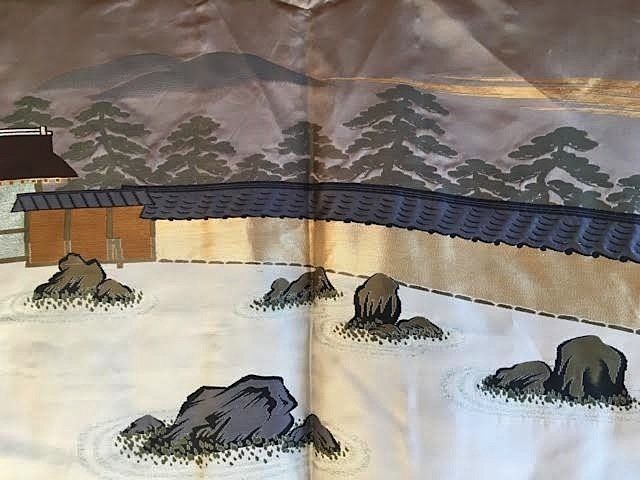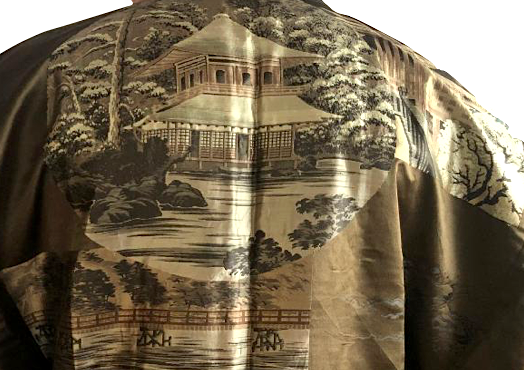- KyotoKimonoShop
- Haori
- 0 likes
- 2835 views
- 0 comments
How is a traditionally male haori made and what techniques are used to create the intricate patterns and embroidery on the fabric?
 A traditional men's haori is made from high quality silk, linen or cotton, and is often lined for extra comfort and warmth. The fabrics used for making a haori can be plain or printed with intricate designs. Making a traditional haori involves several steps, including selecting and preparing fabrics, cutting and assembling pieces, sewing, and finishing. The intricate patterns and embroidery on fabric are often created using craft techniques such as shibori, which involves dyeing fabric through a process of folding and tying to create geometric patterns. Other popular techniques include yuzen, a method of hand-dyeing and painting to create detailed designs, and kirigami, which involves hand-cutting designs into fabric. Additionally, some traditional haoris may be adorned with intricate embroidery, which is often done by hand using silk or cotton threads. The embroideries can represent floral motifs, animals, mythical characters, or landscapes. This technique requires a lot of patience and precision to create patterns of great finesse. In sum, the making of a traditional men's haori involves meticulous craftsmanship and often uses intricate dyeing, painting and embroidery techniques to create original and aesthetic designs on the fabric.
A traditional men's haori is made from high quality silk, linen or cotton, and is often lined for extra comfort and warmth. The fabrics used for making a haori can be plain or printed with intricate designs. Making a traditional haori involves several steps, including selecting and preparing fabrics, cutting and assembling pieces, sewing, and finishing. The intricate patterns and embroidery on fabric are often created using craft techniques such as shibori, which involves dyeing fabric through a process of folding and tying to create geometric patterns. Other popular techniques include yuzen, a method of hand-dyeing and painting to create detailed designs, and kirigami, which involves hand-cutting designs into fabric. Additionally, some traditional haoris may be adorned with intricate embroidery, which is often done by hand using silk or cotton threads. The embroideries can represent floral motifs, animals, mythical characters, or landscapes. This technique requires a lot of patience and precision to create patterns of great finesse. In sum, the making of a traditional men's haori involves meticulous craftsmanship and often uses intricate dyeing, painting and embroidery techniques to create original and aesthetic designs on the fabric.
 There are several Japanese
There are several Japanese
embroidery techniques used to create these designs, including:
- Kogin embroidery: it is a traditional embroidery technique from northern Japan that uses geometric patterns to create elegant designs. It is often used to decorate the borders of haoris.
- Sashiko embroidery: it is a popular embroidery technique that uses stitches to create geometric or floral designs. It is often used to reinforce high wear areas on haoris.
- Kanoko Shibori embroidery: it is a dyeing technique reserved for specialized Japanese artisans who work on high quality fabrics, such as silk. It involves knotting the fabric before dyeing it to create dot patterns on the fabric.
- Kanto embroidery: it is a Japanese embroidery technique that uses thick threads to create bold patterns on haoris. The patterns are often inspired by nature, such as flowers and birds.
- Hishi Ami embroidery: it is a traditional Japanese embroidery technique that uses beads to create intricate designs on haoris. Beads are sewn into place one by one to create intricate and detailed designs.
These Japanese embroidery techniques are all used to create the intricate designs on Japanese haoris. Each has their own unique technique that allows them to create elegant and detailed designs on fabric.



Comments (0)